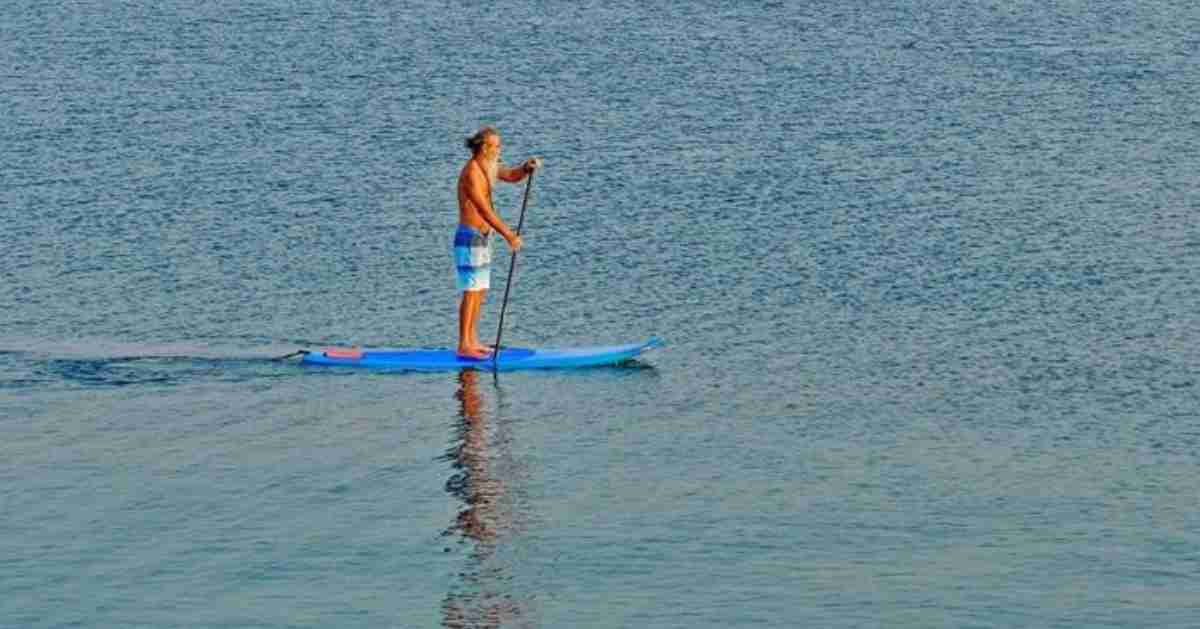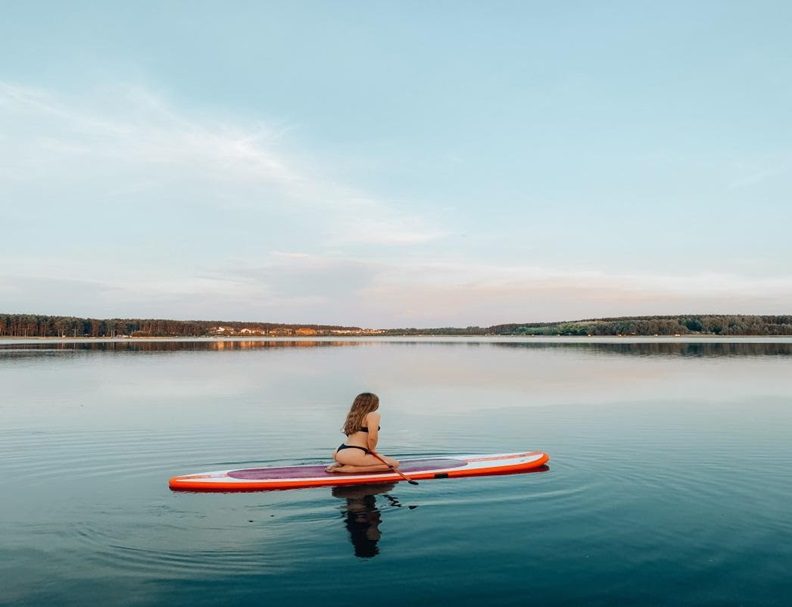Stand Up Paddleboarding Experience: Do’s and Don’ts

Stand-up paddleboarding is an activity full of fun. It can be done on rivers, lakes, oceans, and bays among other water bodies.
Paddleboarding is considered one of the best ways to view the beauty of Mother Nature as you get a full-body workout.
If you are a beginner, you may want to know the do’s and don’ts for Stand Up paddleboarding.
Here are tips and tricks on how to have a great stand up paddleboarding experience.
10 Do’s and Don’ts for Stand-up Paddleboarding
1) Always wear a leash
A leash is an essential piece of gear before you get into the water for stand-up paddleboarding. Whether you are doing it in the dams, oceans, or flat water lakes, always wear a leash.
A leash will ensure you stay connected to the board even in unforeseen conditions. Besides, the leash helps to pull back the board and get back very fast. It also ensures you do not injure other surfers.
There are several types of leashes and various types of attachment positions. However, it depends on the style of padding you are planning to do. Therefore, learn more about the leashes before you get one.
2) Make sure you face the right way
Many beginners are not sure which end is the nose or front of the board. It is because most beginner boards are large and have a large nose.
Hence, before you jump on your board, ensure you are facing the right way. Check where the fins are and ensure they are back when you start paddling.
When the fins are at the back, they keep your board straight as you paddle. But when the fins are upfront, they make the board restless and it cannot go straight no matter how you try.
3) Do not stand as you are surfing
Stand-up paddleboarding is an activity with some rules that you need to follow. Following the rules will ensure you enjoy the exercise and you do not fall often.
One thing you should not do is to stand like you are surfing. If you do this, you might fall and it can make paddling harder for you.
4) Do not rely on the arms when paddling
To do it right, do not rely on your arms to paddle. You need to paddle with your core. Otherwise, the arms will tire you up.
Even though it may seem strange, paddling is done correctly when you use the core. So, let the core muscles do the paddling.
Keep in mind that the core is one of the strongest muscles. Hence, they will offer power for the paddle stroke. Using the arms will be depressing and discouraging. Besides, you cannot get enough power.
5) Avoid looking at the board
Whether you are a beginner or have some experience in paddling, you may be tempted to keep looking down at the board.
You may want to see the water splashing and hope you do not fall. But the best way to maintain stability is to avoid looking at the board.
Always keep the head up, your back straight, and the bodyweight over the toes. It will ensure you do not fall and ensure you move faster.
6) Have enough room for paddling

Although lakes are deep, some rivers are wide, and the oceans are large, people love to paddle at the edge. Some people are always afraid to go deep in the lake.
Remember, the paddleboards are large. They can easily hurt if they hit you. Also, you need to mind other people using the river or ocean.
Therefore, make sure you have enough room to practice paddling, standing, and falling.
7) Fall off the right way
Both pros and beginners fall off their boards. Therefore, you need to learn the best way to fall off. Just the way you know the techniques of wave riding, you need to learn fall tricks as well.
Learning how to fall the right way will ensure you are not injured when you fall. Also, you do not want to be hurt by the paddleboard when you fall. You want to fall safely and away from the board.
Since you are attached to the board with a leash; the board cannot go away even if you fall. It is also fun to fall correctly.
8) Ride waves for your skill level
We all do stand-up paddleboarding for fun. Hence, do not go there to prove something. Always ride waves for your skill level.
Keep in mind that Mother Nature is paramount. Hence, you need to know your limits.
Be smart by riding waves in the right conditions. Also, understand the strength of the water and how the river is flowing.
9) Always watch the wind
Just like the waves, you need to watch the wind as well. You do not want to be caught unaware. Hence, know all the weather conditions as you paddle.
When you are standing on your Stand-up paddleboarding, you are like a sail in the wind. Therefore, ensure you are not caught in the unfavorable wind change.
If you notice a critical wind change, you need to try prone paddling. It is a technique where you kneel on the prone board or lie down. It is like swimming while you are kneeling or lying on a paddleboard.
10) Do not neglect your board and paddle

Paddleboards, especially for beginners, are big. Therefore, you should handle them with care. They are designed with lightweight materials to make them durable, manageable, and seaworthy.
So, they might be fragile and delicate. Look after them and avoid throwing the board around on land.
Final Word
Whether you are new to paddleboarding or not, you need to understand and follow the above do’s and don’ts. There are essential tips and tricks for anyone paddling.
Also, be prepared to fall regularly. To fall off the board is part of the training. However, make sure that the water is deep enough to ensure you do not hit the ground.
